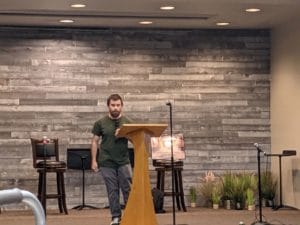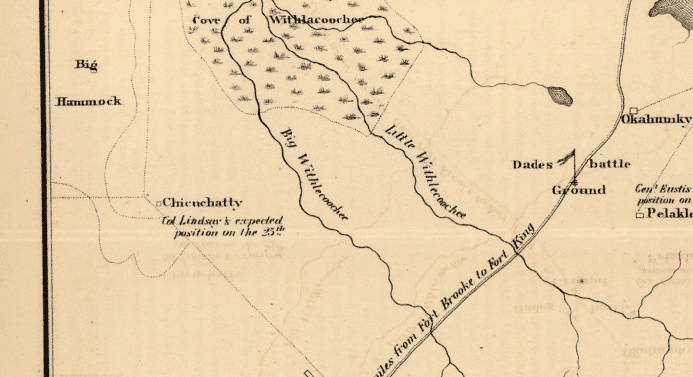On Thursday, November 4, 2021, Sean Norman, Acting Executive Director of the Gulf Archaeology Research Institute, gave an update on the status of the Chocachatti research project. They have not managed to locate the artifact scatter that would be expected for a town that was occupied for nearly 70 years. Chocachatti was a very early settlement of Creeks in central Florida. Many Seminoles/Creeks were only in Florida for a few years. They were relocated to Central Florida as required by treaty and then forced to leave by another treaty; all within eight and a half years. The Treaty of Moultrie Creek signed on September 18, 1823 established a Seminole reservation in central Florida in return for payments and required the Seminoles to renounce rights to the rest of Florida. Then the Treaty of Payne’s Landing which was an agreement signed on May 9, 1832, required the Seminoles to be relocated to the Creek Reservation in Arkansas Territory (Present-day Oklahoma).
Mr. Norman Spoke about how the search had managed to locate a site that is likely Camp Broadnax as well as a site that appears to have been a Seminole armory. The locations of the sites were not disclosed as they both lie on private lands, although roughly speaking they are within the Mondon Hill and Jasmine Rd area of Brooksville.

Camp Broadnax was the site of a relatively minor skirmish with Seminoles during Colonel William Lindsay’s campaign. (Lindsay led one of three columns totaling 5000 men descending on the Seminoles in this area.)
Major General Winfield Scott came up with a plan for three columns to surround and crush the Seminoles. General Clinch led one column and was accompanied by General Scott. A second column was led by Brigadier General Abraham Eustis. The third column coming from Fort Brooke in Tampa was led by Colonel William Lindsay. The Seminole easily avoided the 3 columns. During this military operation Chocochatti was burned.
The location of Camp Broadnax was established by a number of military buttons found at the site. The soldiers who were part of Colonel Lindsay’s campaign who established Camp Broadnax were members of an artillery regiment and the buttons that were found appear to be artillery buttons (denoted by the letter “A” on the button).
The Seminole armory site was where old guns were dismantled and some of the metal parts were used to make arrows. The return to the use of arrows was probably dictated by a large military presence in the area. The use of arrows would have attracted less unwanted attention when hunting. As far as we know this is the first time a site like this has been discovered.
Mr. Norman mentioned that there is no agreed upon spelling of the name of the town of Chocachatti. The town was phonetically spelled using English sounds by people who heard the name. This resulted in there being many different historic spellings of the town. This is why Chocachatti Elementary School has a different spelling than the Chocochatti historical marker.
Mr. Norman explained that the terms red and white were used to describe the Creek people. The reds were the warriors and the whites favored diplomacy. These terms were affixed to individuals, groups, and even towns. The term red town (Chocochatti) would have meant that this was a warrior town.
The Chocachatti villagers spoke the Muscogee language and were from the upper Creek towns (sometimes referred to as red sticks). The majority of Seminoles in the area at the time of the Second Seminole War were Miccosukee and spoke the Mikasuki language.
The Gulf Archaeology Research Institute has further plans in the area. They hope to verify the location of Fort Cross (Second Seminole War-era fort). They work closely with the Historic Hernando Preservation Society and we will keep you updated on what they find.

